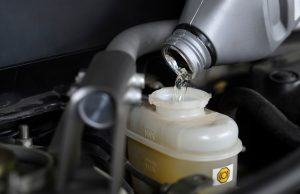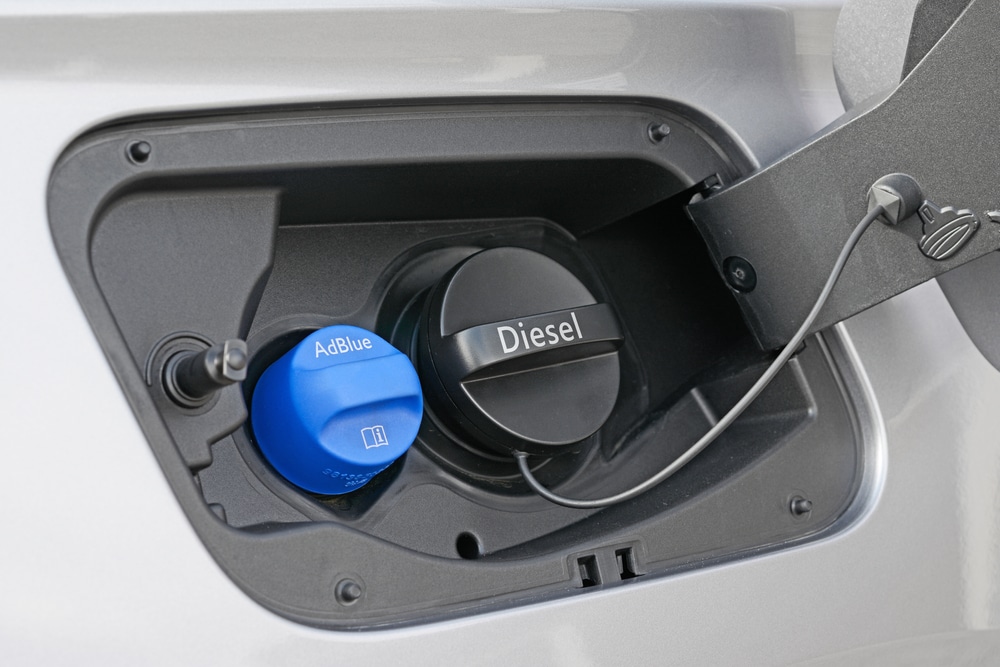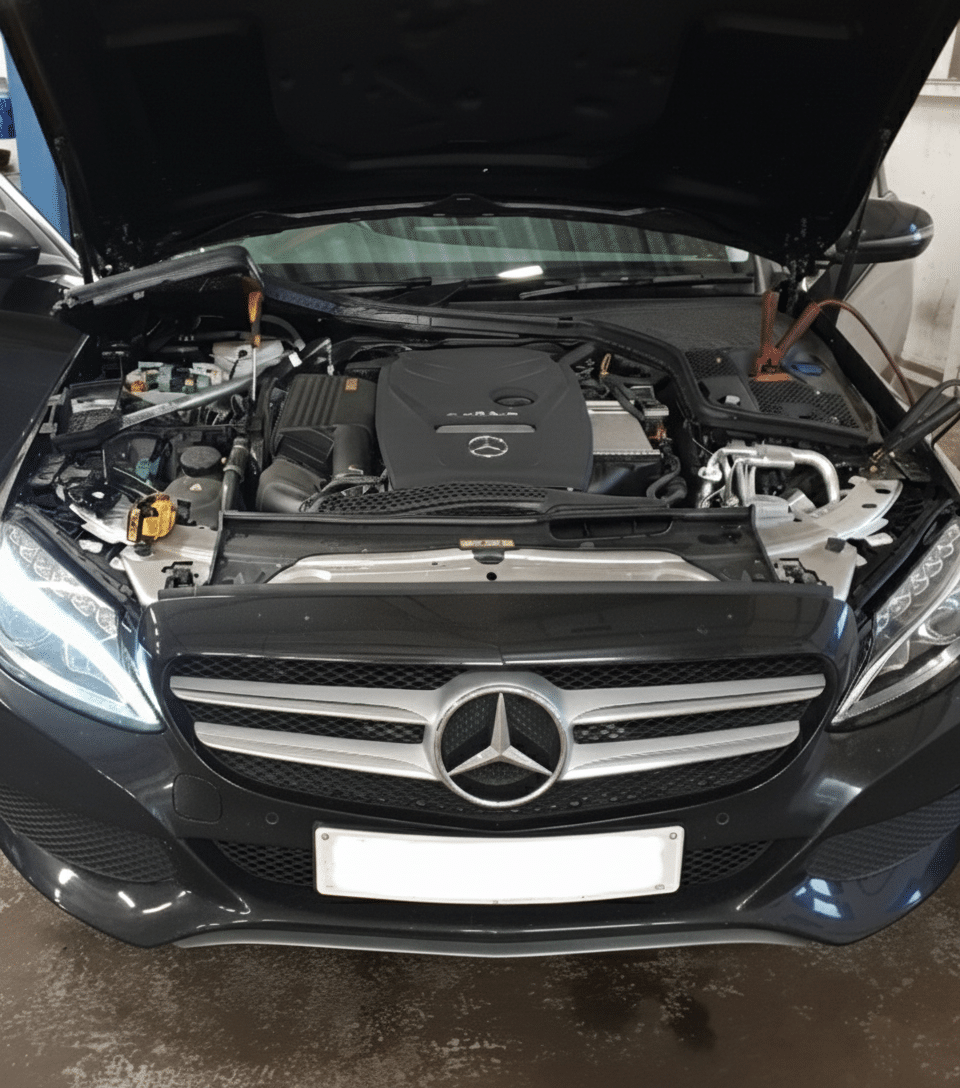Brake Fluid
Brake fluid is a vital part of your braking system, ensuring that every press of the brake pedal translates into smooth, effective stopping power. Over time, however, brake fluid absorbs moisture and becomes less efficient. This can lead to longer stopping distances, reduced braking responsiveness, and even brake fade during emergencies.
At JDK Automotive, we carry out professional brake fluid checks and changes to manufacturer specifications. Our skilled team ensures your brake fluid is always in peak condition, helping to keep you safe on the roads in Camberley, Farnborough, and surrounding areas.
Call 01276 535585 today to book a brake fluid inspection or change with our trusted team.

Understanding the Purpose of Brake Fluid
Brake fluid is a crucial part of your vehicle’s braking system, making sure every press of the brake pedal results in smooth and reliable stopping power. It transfers the force from your foot to the brake components with precision and speed, ensuring your car responds exactly when you need it to.
Because brake fluid is incompressible, it delivers pressure instantly and evenly throughout the system. This reaction allows the callipers or wheel cylinders to press the brake pads or shoes against the discs or drums instantly, creating the friction required to slow or stop your car.
But its role goes beyond this. Brake fluid also protects the braking system from internal corrosion and keeps seals and moving parts properly lubricated. It must perform consistently under extreme heat and pressure, especially during emergency stops. Modern systems like ABS and electronic stability control rely on brake fluid to work correctly, making its condition critical.
Keeping the fluid fresh and at the correct specification ensures your vehicle’s braking system remains safe and responsive in all driving conditions.
Brake Fluid’s Role in Your Braking System
Brake fluid is what transforms a simple press of your brake pedal into controlled stopping power. When you push the pedal, you’re not directly engaging a mechanical part on the wheels. Instead, the action activates a master cylinder, which compresses the brake fluid and builds hydraulic pressure.
This pressure is then transmitted through the brake lines to callipers or wheel cylinders, depending on the system design. The resulting force pushes the brake pads or shoes firmly against the brake disc or drum, creating friction and bringing your vehicle to a stop.
When brake fluid is in good condition, it remains incompressible, meaning the pressure is delivered instantly and evenly. This gives you the predictable braking feel you rely on.
Its role extends beyond this process. Brake fluid must also support systems like ABS and electronic stability systems, which require precise hydraulic performance to function effectively.
Brake fluid is working tirelessly behind the scenes to keep your braking reliable and safe.
Where to Find Your Brake Fluid Reservoir
If you lift your car’s bonnet, you’ll usually find the brake fluid reservoir positioned towards the back of the engine bay, often on the driver’s side. It’s a small, translucent container designed to make it easy to check fluid levels.
Inside, there’s a rubber diaphragm or cap seal that prevents air and moisture from entering the system. This is vital because brake fluid naturally absorbs moisture over time, which can lower its boiling point and reduce braking efficiency if left unchecked.
The reservoir’s semi-transparent design allows for a quick visual check, but a professional inspection is needed to assess the fluid’s colour and condition accurately.
Even though it’s a small component, the brake fluid reservoir is a key indicator of your braking system’s health. Any drop in fluid level or change in appearance should be checked promptly by experts like the team at JDK Automotive.
DOT Brake Fluid Types: A Simple Breakdown
Not all brake fluids are the same, and using the wrong type can affect the performance and safety of your braking system. Each type is designed to handle specific conditions, so it’s vital to understand their differences.
- DOT 3 Brake Fluid – A glycol-based fluid with a relatively low boiling point. It’s often found in older vehicles without modern braking technologies. DOT 3 absorbs moisture over time, which reduces its performance and requires regular replacement.
- DOT 4 Brake Fluid – The most commonly used type in modern vehicles. It has a higher boiling point than DOT 3, making it ideal for cars equipped with ABS or traction control. Like DOT 3, it’s hygroscopic and should be changed at recommended intervals.
- DOT 5 Brake Fluid – A silicone-based fluid that does not absorb water. It’s typically used in classic or specialist vehicles. DOT 5 is not compatible with DOT 3 or DOT 4 systems, as mixing them can cause serious damage to seals and components.
- DOT 5.1 Brake Fluid – Offers similar high performance to DOT 5 but is glycol-based like DOT 3 and DOT 4, making it suitable for high-performance or heavy-duty vehicles.
Your vehicle needs a specific brake fluid type, and using the wrong one can cause damage. At JDK Automotive, we ensure the correct brake fluid is always used for your car’s system.
What Impacts the Quality of Brake Fluid
Brake fluid is designed to perform under high pressure and extreme temperatures, but it isn’t indestructible. Over time, several factors can reduce its effectiveness, putting your vehicle’s braking performance and safety at risk if it’s not replaced as recommended.
Moisture Absorption – Brake fluid is hygroscopic, meaning it naturally absorbs water from the atmosphere. This happens even through microscopic pores in hoses and seals. As water content rises, the fluid’s boiling point drops, increasing the risk of vapour lock – a dangerous condition where the fluid boils during heavy braking and forms bubbles that stop it from transmitting pressure effectively.
Heat and Pressure – Braking generates high temperatures, particularly during repeated or emergency stops. Over time, the heat and stress cause brake fluid to break down chemically, making it less stable and less effective.
Chemical Additives and Stability – Quality brake fluids are blended with additives to prevent rust, corrosion, and seal damage. As the fluid ages, these protective additives lose their effectiveness, leaving components vulnerable to wear.
Contamination – Small particles from seals, rust, or even incorrect fluid can contaminate the system, leading to reduced braking precision and internal damage.
Old or Incorrect Fluid – Using an unsuitable fluid grade, or one that hasn’t been replaced on schedule, can disrupt systems like ABS and traction control, making emergency braking unpredictable.
Brake fluid requires changing at regular intervals, and if it’s left unchanged for too long, it can cause a noticeable drop in stopping power or, in severe cases, complete brake failure. During a service at JDK Automotive, we accurately measure the condition and quality of your brake fluid, advising you on the best course of action to keep your vehicle’s braking system safe and reliable.
How to Spot Problems with Your Brake Fluid
Brake fluid won’t alert you with a dashboard light, so knowing what to look for is essential. Regular servicing at JDK Automotive ensures your brake fluid is inspected and replaced before any issues affect your safety.
Watch for these signs that your brake fluid may need attention:
- Spongy or Soft Pedal Feel – If the brake pedal feels less firm or requires more pressure, moisture or air could be affecting the fluid’s ability to transmit pressure properly.
- Brake or ABS Warning Lights – Some vehicles display warning lights when fluid levels are low or pressure is inconsistent.
- Burnt or Harsh Smell – A chemical or burnt odour from the fluid when the reservoir cap is removed can indicate it has deteriorated.
- Dark or Cloudy Fluid – Brake fluid should appear clear or light-coloured. A darker or dirty appearance may mean contamination from rust, water, or debris.
If you notice any of these signs, book a brake fluid inspection with JDK Automotive. Our expert team will ensure your braking system stays safe and responsive.
The Risks of Overlooking Brake Fluid Care
Brake fluid deteriorates slowly, which means problems often build up unnoticed. As it absorbs moisture and breaks down under heat, its ability to transmit hydraulic pressure weakens, reducing braking performance when you need it most.
Left unchecked, old or contaminated fluid can corrode seals, callipers, and other components, leading to expensive repairs. More importantly, it can cause a soft brake pedal, longer stopping distances, or complete brake failure in emergency situations.
Brake fluid has a limited lifespan, which is why manufacturers recommend replacing it regularly – even if the car “feels fine.” At JDK Automotive, we check your brake fluid during every service and provide clear advice on when to change it, ensuring your vehicle remains safe and reliable.
Keep Your Brakes Safe – Book a Service Now
Brake fluid is vital to the performance and safety of your braking system, but it naturally absorbs moisture and loses effectiveness over time. Left unchanged, it can reduce braking power or even lead to brake failure during an emergency stop. Regular checks and timely changes are the simplest way to avoid these risks.
At JDK Automotive, we carry out professional brake fluid checks and changes, following the exact specifications recommended by your vehicle’s manufacturer. Our team ensures your braking system stays sharp, reliable, and ready when you need it most.
Why choose JDK Automotive?
- We use manufacturer-approved brake fluids and procedures
- Skilled technicians with years of hands-on experience
- Brake fluid checks included with routine servicing
- All work guaranteed for 12 months (parts and labour)
Don’t leave your safety to chance. Book your brake fluid service with JDK Automotive in Camberley today and keep your car’s braking system performing at its best.



